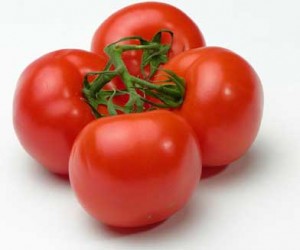Inflammation
Inflammation is best described as the body’s immune system response to “attack”. It takes the form of a localised protective reaction of tissue to infection, injury or chemical irritation.
During the process, as the white blood cells rush to the ‘injured’ area, chemicals from the body’s white blood cells are released into the blood or affected tissues in order to protect the body from the invading “foreign” substances.
This protective process stimulates the nerves as some of these chemicals cause a leak of fluid into the tissues, increasing the blood flow to the area of injury or infection.
This results in swelling, which compresses nerve endings thus causing pain. Inflammation can be characterised therefore by redness, swelling, pain and usually a loss of function.
Chronic Inflammation can promote many diseases
Once the body has healed by removing the substance that was causing the problem, inflammation goes away. But if the injurious agent continues to be present, chronic inflammation will result and this can last many days, months or even years.
Chronic inflammation is almost always accompanied by tissue destruction or at least a degree of tissue dysfunction which will then manifest as disease. What kind of disease you end up with depends on how or where the particular inflammation is developing. Our immune system is overloaded and allergic reactions become rampant.
Food allergies can be traced to this state of inflammation when it is realised that 60% of your functioning immune system surrounds your gut lining. Rheumatoid arthritis is also an autoimmune disease. In this case, the immune system attacks the joint cartilage.
Depending on a person’s genetic predisposition, some may develop atherosclerosis; others may get cancer; still others develop Alzheimer’s disease or osteoporosis. Some people suffer constantly with back pain, headaches, brain “fog” or a sensitive gut.
Atherosclerosis, for example, can be seen as an inflammatory state that develops slowly and goes unnoticed inside the coronary blood vessels until one has a sudden heart attack. Similarly, a sensitive gut can develop from chronic inflammation of the cells lining the digestive tract.
Asthma or bronchitis manifests when the bronchial tubes become blocked by inflammation, or the muscles controlling them become constricted as the muscle cells become inflamed.
Fatty Acids and Inflammation
To be healthy, there are around 50 essential nutrients that our body must have, nutrients which govern life, growth and vitality. Essential Fatty Acids (EFAs) are among these important nutrients
These are the fats necessary to human health, which the body cannot synthesise for itself internally and so must be obtained through diet.
Science has found that two particular types of EFAs called omega 3 and Omega 6 and the balance of these two nutrients is vital to good health.
Grains contain too much Omega 6 in relation to Omega 3 and that is an important reason to limit their intake.

Why Fruits and Vegies are Anti-inflammatory
The ideal ratio of omega-6 to omega-3 is 1:1. Fresh fruit and vegetables are made up of ratios that range from 1:1 to 1:3 therefore they provide an environment in the body that is naturally anti-inflammatory.
Some examples:
Food

How Diet Can Feed Inflammation
How Diet Can Feed Inflammation, Pain, and Chronic Disease?(This is advanced reading for those really interested in preventing inflammation.)
Neurogenic inflammation (inflammatory changes within nerve tissue) is thought to be involved in the pathogenesis (cause) of numerous conditions, such as osteoarthritis, migraine, dental disease, pancreatitis, virus-associated respiratory infection, nonproductive cough, allergic rhinitis, asthma, chronic bronchitis, sarcoidosis, inflammatory bowel disease, rheumatoid arthritis, and painful conditions in general.1-7
Immediately upon injury, damaged cells release various chemical mediators, and thereafter, intact cells in the area of injury produce many more mediators. Each of these mediators has receptors on group IV afferent fibres (pain fibres), which leads to the excitation or inhibition of the sensory nerve fibres typically associated with nociception (the feeling of pain). One outcome of such stimulation can be chronic inflammation, pain, and the expression of the many diseases mentioned earlier.

Eating to Reduce Inflammation
Research is now confirming that the root of many diseases, so prevalent today that they have become an accepted part of the human condition, can be traced to a common cause: a serious and chronic condition of INFLAMMATION within the body.
Are the Foods You Eat Killing You?
Disorders such as cancer, heart disease, back pain, sensitive gut, osteoporosis, atherosclerosis, headaches and migraine are all associated with an INFLAMED condition of the cells.

High Grain Diets in Cattle
The devastation of High-Grain Diets in Cattle New research suggests feeding cattle diets less high in grain would solve much of the need for antibiotics, an issue which has limited Australian beef export opportunities.
Diets of starchy, high-calorie grain trigger disorders in cattle that must be treated with antibiotics and other drugs, new research from USDA and Cornell University suggests. In typical commercial beef production, steers are fed a 90-100-percent grain diet for several weeks in feedlots prior to slaughter so that tender, tasty fat marbling is added to the muscle.
According to James Russell, USDA researcher working at Cornell, an all-grain diet is not natural to cattle. As ruminant animals, cattle are designed to consume and digest huge quantities of high-cellulose, low-nutrition grass. That's why they have four stomachs. "When you feed cattle 90 or 100-percent grain, it creates an acidosis in the rumen (stomach) and the rumen wall becomes ulcerated," he said.

Tomato Juice Appears to Reduce Inflammation
Regular consumption of tomatoes and tomato-based products has been associated with lowered blood pressure and, to a lesser extent, a reduced risk of coronary heart disease. The health-related benefits of tomato products are thought to be derived from carotenoids such as lycopene. These nutrients are also believed to improve immune system function, an important factor given the role of immune and inflammatory processes in the development of atherosclerosis and cardiovascular disease.
In this placebo-controlled, double-blind crossover trial, 26 healthy young volunteers were assigned into two groups. Patients in both groups consumed either a tomato-based drink containing 5.7 mg of lycopene, 3.7 mg of phytoene, 2.7 mg of phytofluene, 1 mg of beta-carotene, and 1.8 mg of alpha-tocopherol, or a placebo drink each day for 26 days, separated by a washout period. Participants maintained their normal diet during the study. Markers for inflammation and immune response were measured using blood samples; DNA damage to basal lymphocytes was also examined.
Production of TNF-alpha, a mediator for inflammation, was reduced by 34.4 percent after 26 days of tomato drink consumption. No changes in TNF-alpha production were observed after consumption of the placebo drink. Other parameters were not significantly modified by the treatment.

Special Tumeric Extract 700% More Bioavailable
'High Potency Anti-Inflammatory Herbs' have been specifically designed for the relief of muscular and arthritic pain and inflammation, combining the traditional knowledge of Western herbal, Chinese and Ayurvedic medicine.
This innovative product contains tumeric, in the form of the exclusive BCM-95 extract. So what makes this type of tumeric so much better than your average health food store supplement or spice rack filler?

Common Anti-Inflammatory Can Cause Serious Bleeding Within 3 Days
People who take high doses of ibuprofen on a regular basis are an alarming three times more likely to experience bleeding in the gastrointestinal tract than those who do not take any painkillers. This disturbing result is made even more unnerving with the revelation that serious bleeding can begin in as little as 3 days, with some people losing up to 250ml of blood within a short amount of time.
Over-the-counter painkiller abuse is a serious problem within Australia as there are minimal or no restrictions placed on the amount of tablets a person can buy. Each year, many people die from complications after using medications like Nurofen, however as this research shows – only a few tablets could prove fatal.

Over The Counter Anti-Inflammatories Increase Stroke Risk
Common over-the-counter drugs that have previously been linked to a higher risk of heart attack may also elevate the risk of stroke.
A recent, large-scale study have revealed that common painkillers and anti-inflammatories, like ibuprofen (Nurofen), aspirin (Advil) and naproxen could cause a stroke. With bleeding from the bowel, heart attacks, stomach ulcers and increased pain already on the cards, we must question why we are dosing ourselves up with drugs, when they could be the problem.

Feeling Hot, Hot, Hot? 7 Simple Ways The Beat The Heat
As a nation of sun lovers, Australians like nothing better than getting out and about during the summer months.
Many of us, however, are oblivious to the potential dangers.
More than 1,000 deaths per year in Australia are linked to heat-related illnesses, and with summer temparatures soaring to above 40 degrees in many parts of the country, we would all be wise to take some simple precautions.





